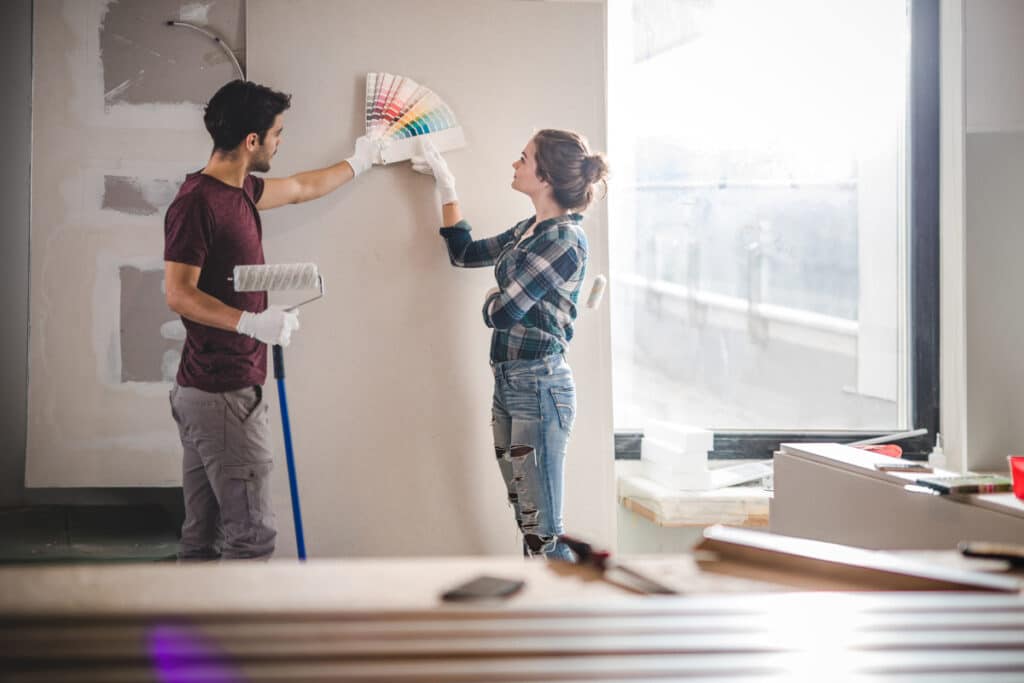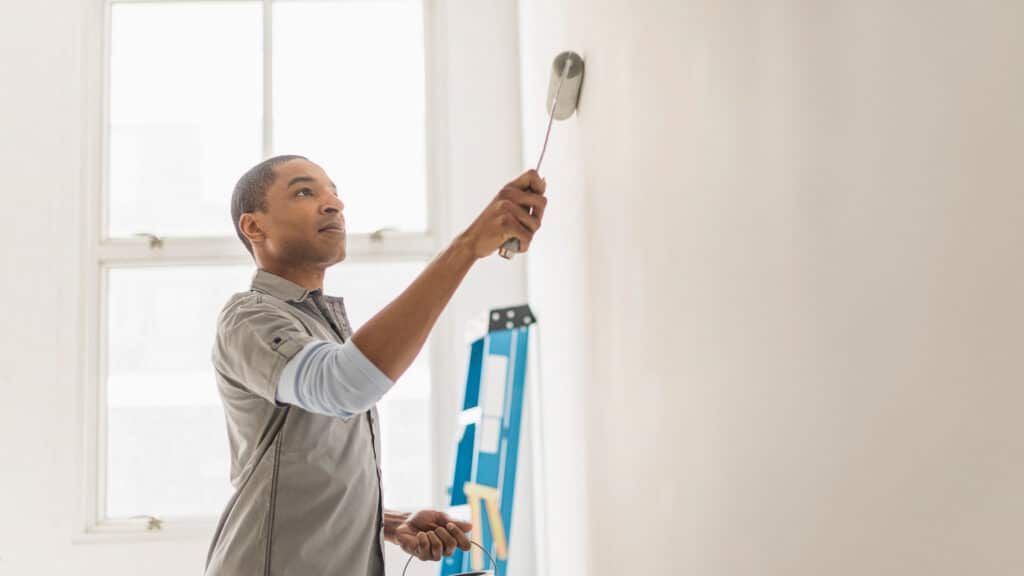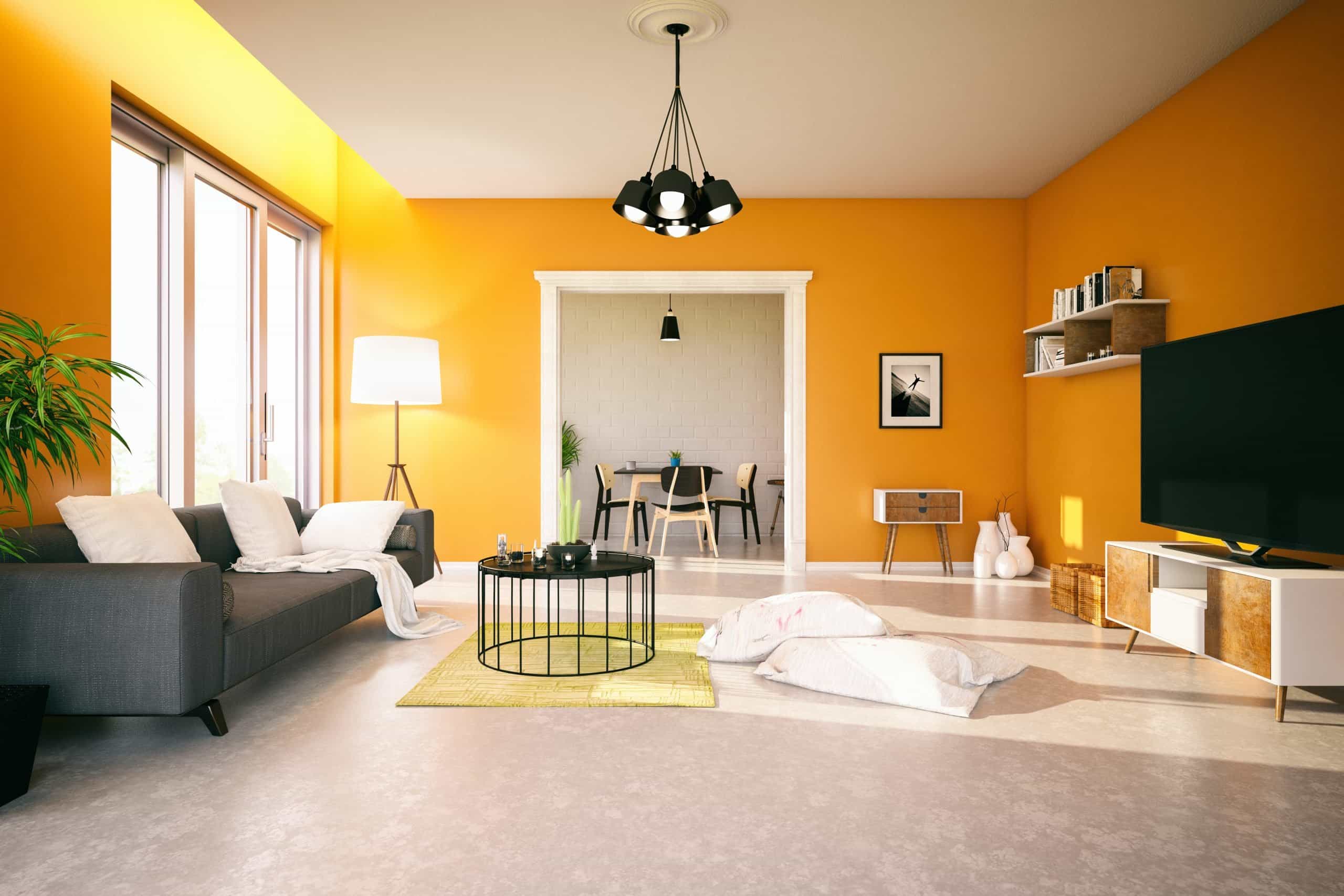How Often Should You Paint The Interior Of Your House
Introduction
How Often Should You Paint The Interior Of Your House: The frequency of painting the interior of your house is a crucial consideration to keep your living spaces looking fresh, vibrant, and well-maintained. In this guide, we’ll delve into the factors that influence how often you should paint house your interiors, helping you strike the perfect balance between aesthetics and practicality. Whether you’re seeking to update your home’s style or preserve its appeal, understanding the optimal painting schedule is essential for a cozy and inviting living environment.
The interior of your home is not just a physical space; it’s a canvas that reflects your evolving tastes, experiences, and memories. Interior painting isn’t merely an aesthetic endeavor; it’s a preservation of the stories embedded in every corner. It’s about enhancing the vitality of your surroundings, breathing new life into your cherished abode. But it’s also about practicality—shielding surfaces from wear and tear, maintaining a sense of hygiene, and embracing the evolving trends of design. The rhythm of repainting is a symphony orchestrated by a fusion of factors, from the type of paint used and the room’s purpose to the quality of previous applications and the daily rhythms of life lived within.
In this exploration, we embark on a journey through hues and tints, discussing the art and science of repainting interiors. We’ll navigate through the considerations that shape the cadence of this endeavor, empowering you to make informed decisions about the timing and frequency of your paintbrush’s dance. So, let’s embark on this colorful voyage, where the mundane task of painting transforms into an art form that enlivens your living spaces.

How long does interior paint last on the wall?
5 to 10 years
In general, interior paint will last from 5 to 10 years. You can expect your exterior paint to last between 5 to 7 years. Keep in mind that your exterior paint will be affected by regional climate conditions, the material painted, and the type of paint used.
Paint Quality: High-quality paints typically contain better pigments, binders, and additives, resulting in enhanced durability. These paints adhere better to surfaces and resist fading, chipping, and cracking. Investing in premium paints can significantly extend the life of your interior paint job.
Surface Preparation: Properly preparing the surface before painting is crucial. Cleaning, sanding, and priming the walls ensure better paint adhesion and can prevent issues like peeling and bubbling. Neglecting this step can shorten the lifespan of your paint job.
Application Technique: The way the paint is applied matters. Uneven application, excessive thickness, or inadequate coverage can lead to premature wear. Following proper painting techniques and using the right tools can help achieve a smooth and long-lasting finish.
Environmental Conditions: The environment in which the painted walls are located plays a significant role in the paint’s longevity. High humidity, extreme temperatures, and exposure to direct sunlight can accelerate paint deterioration. Using appropriate paint types (e.g., moisture-resistant paint in bathrooms) for specific environments can extend the life of the paint.
How many times can you paint interior walls?
You can paint your walls in your home as often as you like. If you notice a buildup of paint, you can sand the walls down to remove it before the project. You also have the option of using a paint stripper to clean your walls before you apply a new coat of paint.
Paint Quality and Application: High-quality paints, applied properly, tend to have a longer lifespan. Investing in premium paints that offer better pigments and durability can extend the time between repainting. Well-applied coats that adhere securely to properly prepared surfaces are less likely to show signs of wear and tear.
Surface Preparation: Thoroughly prepping the walls before painting significantly affects how long the paint job lasts. Cleaning, sanding, and priming ensure proper adhesion, which can extend the life of the paint. Neglecting these steps might result in paint failure and necessitate more frequent repainting.
Lifestyle and Usage: High-traffic areas, such as hallways and living rooms, are more prone to scuffs, scratches, and wear. If you have a busy household or active pets, these areas might require more frequent repainting. Similarly, homes with young children might experience more accidental marks on walls.
Color and Finish: Darker colors, especially intense pigments, can fade more noticeably over time compared to lighter shades. Glossy finishes can also show wear sooner than matte finishes. Opting for lighter colors and matte or satin finishes might help you go longer between paint jobs.
How often should you paint your ceiling?
about every ten to fifteen years
How often should I paint my ceiling? You should paint your ceiling with a fresh coat about every ten to fifteen years. And it’s best to paint your ceilings at the same time as the rest of your interior walls since the paint job requires moving furniture and obstacles out of the way.
Ceiling Material and Finish: The type of material and finish on your ceiling can impact repainting frequency. Different materials, such as plaster, drywall, or wood, have varying levels of durability and might require more or less frequent repainting. Matte and flat finishes tend to hide imperfections and aging better than glossy finishes.
Environmental Conditions: Environmental factors such as humidity, temperature changes, and ventilation can affect the condition of your ceiling. High humidity levels might lead to paint peeling or discoloration, while extreme temperatures can cause the paint to expand and contract, potentially leading to cracks.
Quality of Initial Paint Job: A well-executed initial paint job, with proper surface preparation and high-quality paint, can contribute to the longevity of your ceiling’s appearance. Investing in good paint and ensuring a smooth application can lead to longer periods between repaints.
Usage and Lifestyle: High-traffic areas or rooms with a lot of activity, like kitchens or playrooms, might experience more wear and tear on the ceiling. Cooking fumes, smoke, and moisture can also impact the ceiling’s condition, necessitating more frequent repainting.
What is the life of interior paint?
A general rule of thumb is that a well-done interior paint job will last between 5-10 years, and potentially even longer. However, your paint’s longevity is based on a bunch of different factors.
Paint Quality: The quality of the paint you use plays a significant role in determining its lifespan. High-quality paints contain better pigments, binders, and additives, resulting in improved durability and resistance to fading, chipping, and cracking. Investing in premium paints can lead to a longer-lasting finish.
Surface Preparation: Properly preparing the surface before painting is crucial. Cleaning, sanding, and priming the walls create a smooth foundation for the paint to adhere to. Neglecting proper preparation can lead to premature peeling, chipping, and uneven wear.
Application Technique: The manner in which paint is applied also affects its longevity. Professional, even application with appropriate tools can result in a more durable and consistent finish that stands the test of time.
Environmental Conditions: The environment in which the paint is applied and the painted walls are located can impact how long the paint lasts. High humidity, extreme temperature fluctuations, and exposure to direct sunlight can accelerate paint deterioration. Using paints formulated for specific environments can extend their lifespan.
Maintenance Practices: Regular maintenance and cleaning habits can either prolong or shorten the life of your interior paint. Abrasive cleaning methods, harsh chemicals, and excessive scrubbing can gradually degrade the paint. Gentle cleaning practices can help maintain its appearance.
Is interior painting worth it?
Increase the Value of Your Home
It can also help sell a home that’s on the market faster, even over asking price. Even if you are not planning on selling your home in the foreseeable future, a good interior paint job by a professional painting contractor can last up to 7 years.
Aesthetics and Personalization: The most apparent reason for interior painting is the aesthetic transformation it brings. A fresh coat of paint can instantly revitalize a room, creating a new atmosphere and setting the tone for your décor. From calming neutrals to bold accent walls, painting provides an opportunity to personalize your space according to your taste and style.
Enhanced Mood and Ambiance: Colors have a profound impact on our emotions and mood. Well-chosen paint colors can influence how you feel in a room. Soft blues can promote relaxation, vibrant yellows can bring energy, and earthy tones can create a cozy environment. Painting allows you to curate an ambiance that aligns with your desired emotional experience.
Home Value Boost: Whether you’re planning to sell your home soon or not, a professionally painted interior can significantly increase its resale value. A well-maintained and aesthetically pleasing interior leaves a positive impression on potential buyers, making your property more appealing in a competitive market.
Cost-Effective Transformation: Compared to major renovations or remodeling projects, interior painting is a cost-effective way to update and refresh your living space. It offers a high impact at a relatively low cost, making it an excellent option for those seeking a budget-friendly home improvement.
How many coats of paint is OK?
How many coats of paint do I need? Generally, you will want a minimum of two coats of paint – this is a good rule of thumb for any wall or ceiling you’re painting. You’ll rarely get a seamless finish from just one coat of paint, and even if you do, coverage isn’t the only goal when it comes to painting a room.
Type of Paint: The quality and type of paint play a significant role. Higher-quality paints often have better coverage and pigmentation, allowing you to achieve satisfactory results with fewer coats. Paints with built-in primer can also reduce the number of coats required.
Color and Shade: The color you’re painting over and the color you’re applying can influence coverage. Lighter colors may require fewer coats to cover darker shades, while attempting to achieve a vibrant, consistent finish with deep or intense colors might necessitate more coats.
Surface Preparation: The condition of the surface being painted matters. A well-prepared surface, which includes cleaning, sanding, and priming, can help the paint adhere better and require fewer coats for even coverage.
Coverage and Consistency: Achieving complete coverage and consistent color distribution is essential for a professional finish. Sometimes, a third coat might be required to ensure an even look, particularly if the second coat reveals any inconsistencies.
Sheen and Finish: Different sheens (e.g., flat, eggshell, satin, semi-gloss, gloss) can affect how light reflects off the paint. Higher sheen paints can sometimes reveal imperfections more clearly, requiring additional coats to achieve a flawless look.
Should you paint every room the same?
You don’t have to use every color in every room. Pick the ones that look the best for each room. You can have one wall color throughout the house if that’s your preference, but use your decor to incorporate your color scheme.
The Pros of Painting Every Room the Same
Flow and Cohesion: A consistent color palette can create a sense of flow and cohesion as you move from one room to another. This approach works particularly well in open-concept homes, where a unified color scheme can connect different areas seamlessly.
Simplicity: Painting every room the same color can simplify the decision-making process. You won’t have to agonize over choosing individual colors for each room, making the decorating process more efficient.
Expanding Space: Using the same color in adjacent rooms can visually expand the space, making it appear larger and more open. This is especially effective in smaller homes or rooms.
The Benefits of Diverse Room Colors
Distinctive Spaces: Different colors for each room can help create distinct atmospheres and define the purpose of each space. For example, calming blues in the bedroom, energizing yellows in the kitchen, and soothing greens in the living room.
Highlighting Features: Varied colors can emphasize unique architectural features or design elements in each room, such as accent walls or decorative trim.
Do you need 2 coats of interior paint?
Another question we get asked a lot from DIY painters and other contractors is, “how many coats of paint do I need when painting the interior or exterior of a home. The general rule is that you should use two coats of paint.
Consistent Color and Coverage
Applying two coats of paint ensures consistent color and coverage throughout the painted surface. A single coat might not fully cover the underlying color or imperfections, resulting in an uneven finish. Two coats help eliminate streaks, patches, and color variations, providing a smooth and flawless appearance.
Hiding Imperfections
Interior walls and surfaces can have minor imperfections, such as small dents, scratches, or patches. A second coat of paint helps mask these imperfections and creates a uniform surface, making the flaws less noticeable.
Enhancing Durability
Two coats of paint contribute to the durability of the finish. The additional layer creates a more robust protective barrier against wear, tear, and moisture. This is especially important in high-traffic areas or rooms exposed to elements like steam, cooking residue, or humidity.
Proper Adhesion
The first coat of paint acts as a foundation, helping the second coat adhere better to the surface. This results in a more stable and long-lasting finish that resists peeling, chipping, and cracking.

Conclusion
The frequency of repainting isn’t just a matter of routine; it’s an intimate connection between your personal narrative and the spaces you inhabit. By considering factors such as the quality of previous paintwork, the wear and tear specific rooms endure, and the evolving trends in design, you’ve gained the tools to orchestrate the perfect cadence for refreshing your interiors. Repainting isn’t just a task—it’s an opportunity to transform your living spaces, breathing new life into them and revitalizing their charm.
So, as time continues its elegant dance, remember that your walls are more than surfaces—they’re the backdrop to your life’s journey. With each brushstroke, you reimagine your home, infusing it with vibrancy and character. Whether you choose to adhere to a strict schedule or let the ebb and flow of life guide your decisions, the act of painting remains a timeless expression of care, creativity, and the enduring connection between you and your cherished abode.
In the palette of homeownership, the rhythm of repaint interior of your house becomes a melody of both aesthetics and practicality. Our exploration into this endeavor has unveiled a dynamic interplay of colors, emotions, and responsibilities. As we conclude this journey, the importance of striking the right balance between preserving the allure of your living spaces and accommodating the demands of life has become clear.








